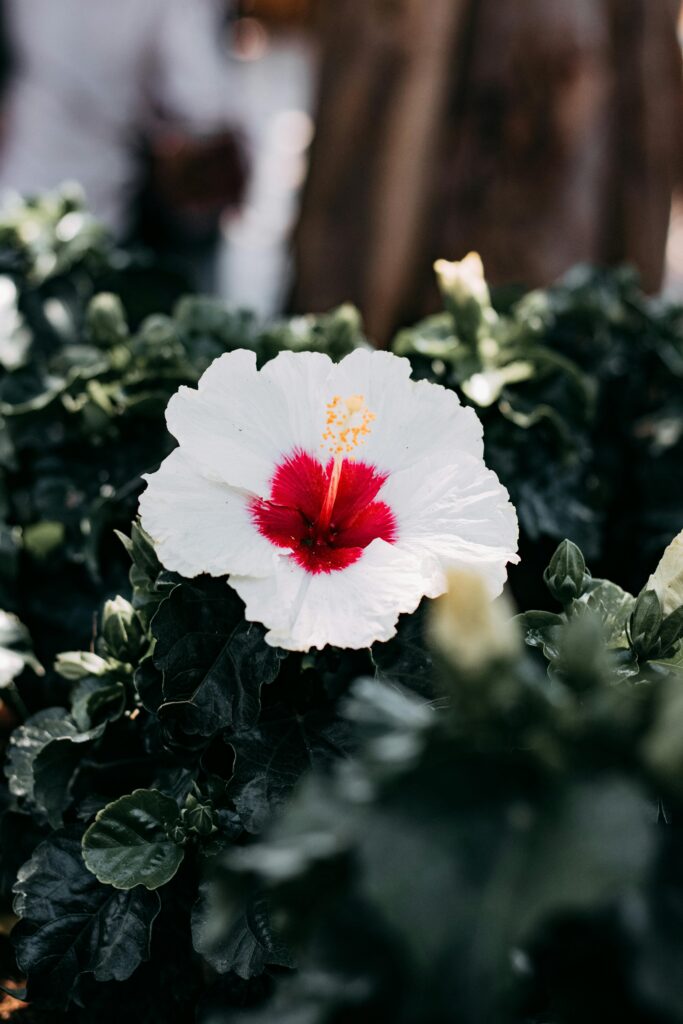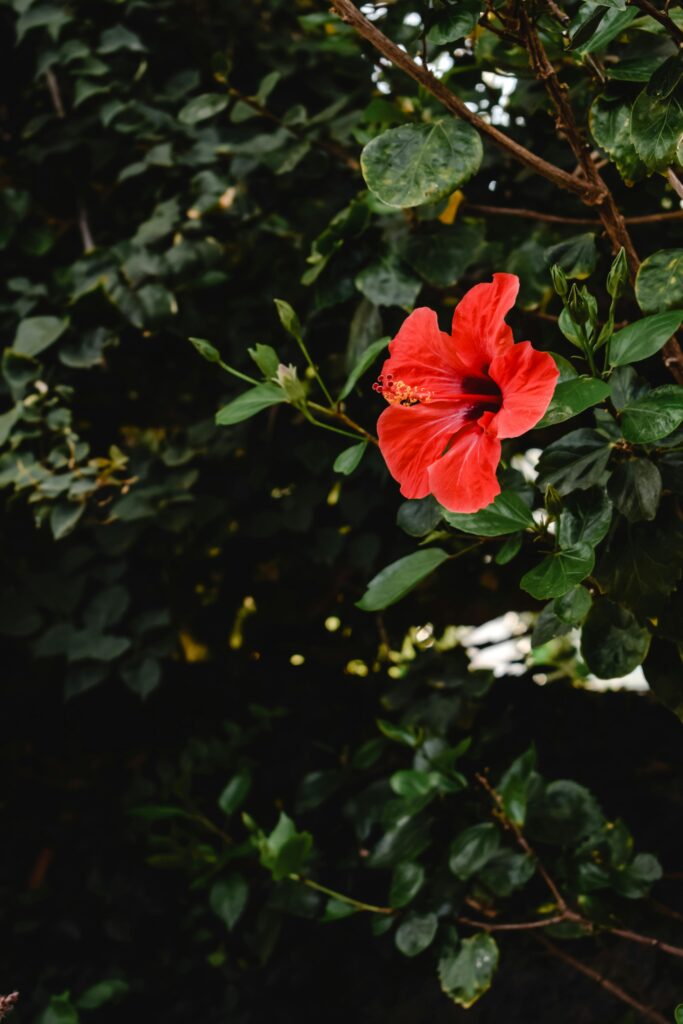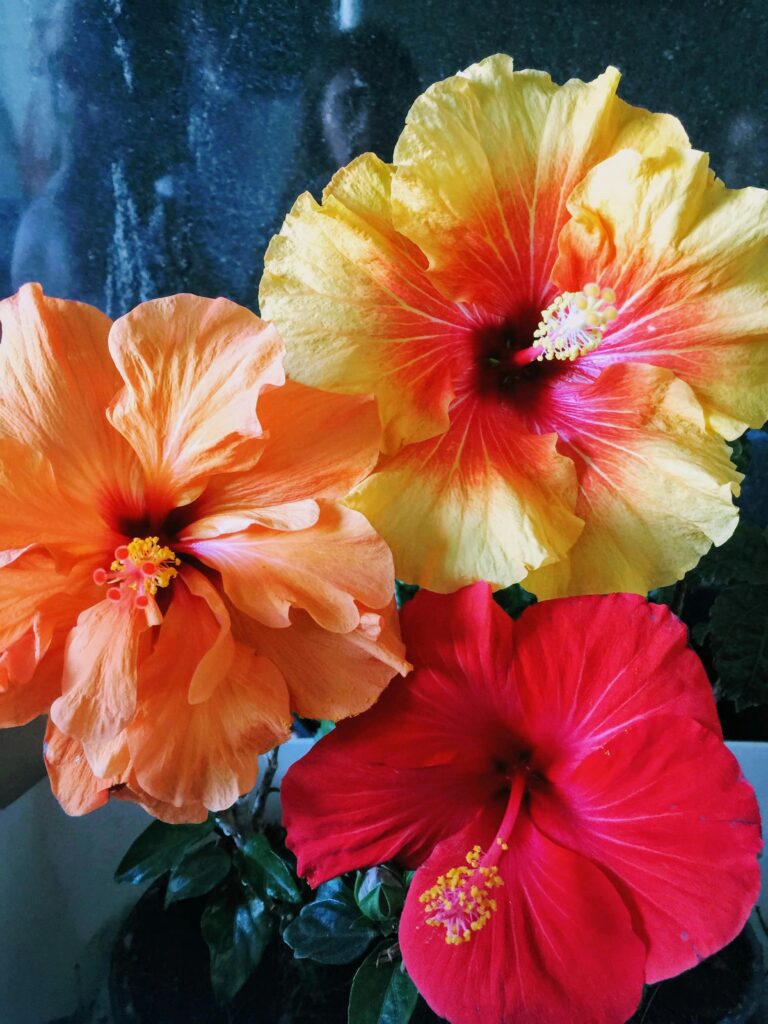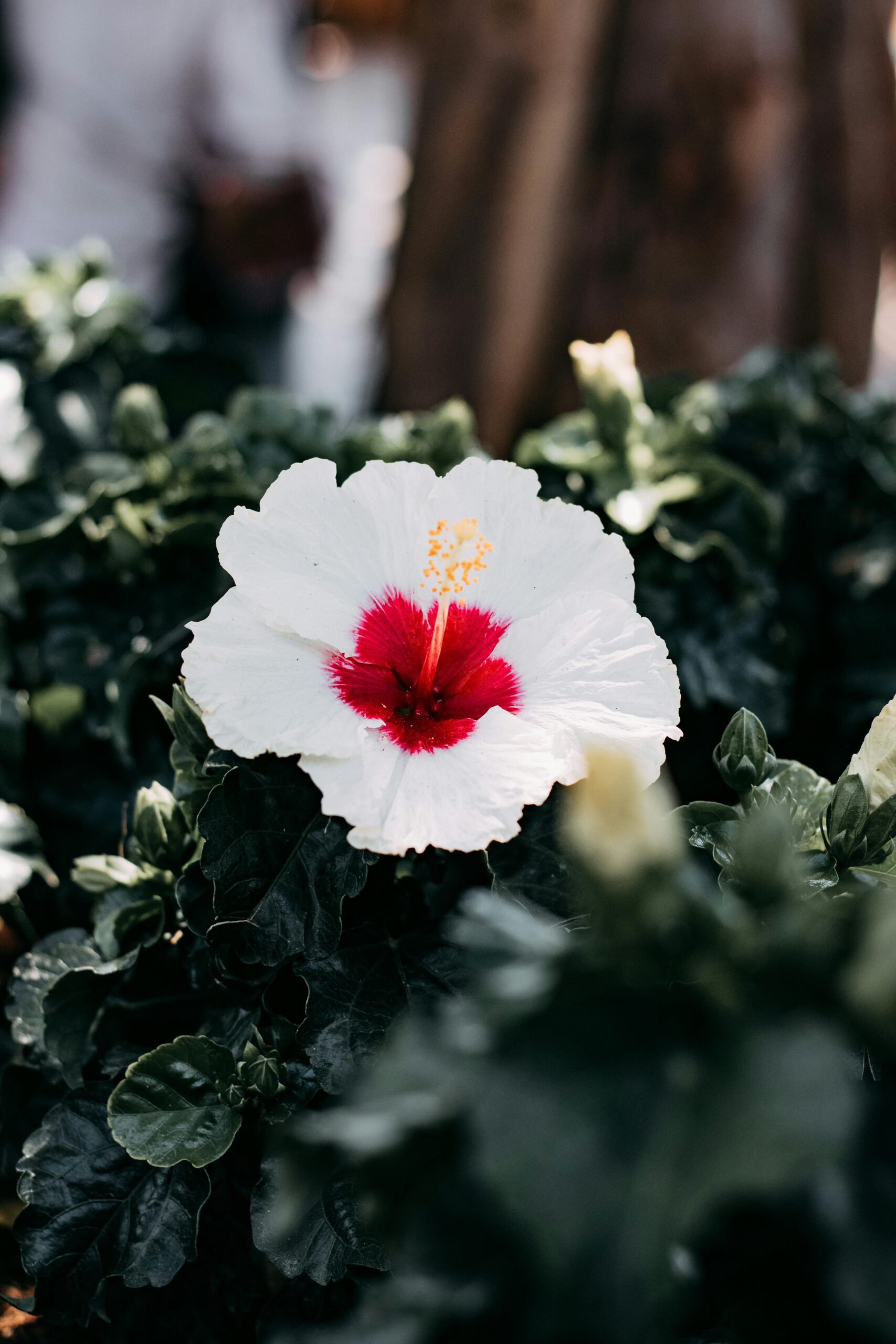
Wherever it grows, the hibiscus (Hibiscus rosa-sinensis and related species) is a show-stopper that instantly adds a dash of tropical charm. This is a favourite among gardeners because of its striking colours, adaptability, and capacity to draw pollinators like hummingbirds and butterflies. It is well-known for its large, colourful, trumpet-shaped blooms. These flowers can transform any area into a getaway, whether they are placed in decorative pots, on your balcony, or in your garden.
Table of Contents
What is Hibiscus?
This belongs to the Malvaceae family of flowering plants. These plants, which number over 200 species, are primarily found in tropical and subtropical areas. They are renowned for their large, eye-catching flowers, which can be sunny yellows, soft pinks, fiery reds, or even eye-catching two-toned combinations.
Hibiscus rosa-sinensis, also known as the tropical hibiscus or simply the Chinese hibiscus, is the most widely grown variety in gardens. These plants bear blooms up to 8 inches across and do well in warm climates.
The versatility of hibiscus is what intrigues me. It is more than just a pretty flower; it is used in cuisine, medicine, and culture all over the world.
A Flower Rich in Symbolism
In many cultures, hibiscus has special meanings.
Hawaii: The state flower of Hawaii is the hibiscus. It is frequently worn behind the ear by islanders as a symbol of hospitality and beauty.
China: Stands for notoriety, riches, and individual splendor.
India: Used in religious ceremonies and revered by the goddess Kali.
South Korea and Malaysia: National flowers, representing resilience and courage.
This is more than just an ornamental flower because of its broad symbolism; it is a flower that reflects customs and tells tales.

Why It Is So Special
- Bold, Beautiful Blooms: Striking flowers in shades of red, pink, yellow, orange, and white.
- Long Blooming Season: Flowers appear from spring through fall in warm climates.
- Symbolism: Represents beauty, love, and delicate femininity in many cultures.
- Pollinator-Friendly: Attracts bees, butterflies, and hummingbirds.
Popular Types
- Tropical Hibiscus : Evergreen shrubs with large, colorful blooms.
- Hardy Hibiscus (Hibiscus moscheutos): Can survive cold winters; produces dinner-plate-sized flowers.
- Rose Mallow: Known for giant blooms and robust growth.
- Hibiscus sabdariffa (Roselle): Grown for edible calyces used in teas and jams.
Growing: Step-by-Step Guide
1. Climate and Location
It loves warmth and sunshine. Place it in a location with at least 6 hours of direct sunlight daily.
2. Soil Preparation
Use well-draining soil enriched with organic matter. A slightly acidic to neutral pH (6.0–7.0) is ideal.
3. Planting
- Plant in spring when the risk of frost has passed.
- Space plants 3–6 feet apart, depending on variety.
4. Watering
Keep the soil evenly moist, especially during hot weather. Avoid waterlogging.
5. Fertilizing
Feed every 2–3 weeks during the growing season with a potassium-rich fertilizer to promote blooms.
6. Pruning
Prune in early spring to remove dead branches and shape the plant.

Common Problems and Solutions
Even though hibiscus is a strong plant, it can face a few challenges:
- Yellow Leaves → Often due to overwatering or poor drainage.
- Few or No Blooms → May be lacking sunlight or potassium.
- Pests → Aphids, whiteflies, and spider mites are common. Neem oil or insecticidal soap can help.
- Root Rot → Caused by standing water. Always ensure well-drained soil.
Benefits and Uses
- Ornamental: Perfect for gardens, patios, and landscapes.
- Culinary: These flowers (especially Roselle) are used in teas, juices, and jams.
- Medicinal: Traditionally used in herbal remedies for heart health, digestion, and skin care.
- Cultural: Often worn as hair accessories in tropical countries.
Common Problems
- Aphids and Spider Mites Can be controlled with neem oil or insecticidal soap.
- Leaf Yellowing: Often due to overwatering or nutrient deficiencies.
- Bud Drop: Caused by stress from temperature changes or inconsistent watering.
Fun Facts
- It is tea is rich in vitamin C and antioxidants.
- In Hawaii, wearing a hibiscus flower behind the left ear means you’re married; behind the right ear means you’re single.
- Some hibiscus flowers can grow up to 10 inches in diameter.
Conclusion
This is a tropical treasure that brings vibrant color and exotic beauty to any garden. With its striking blooms, versatility, and cultural significance, it’s a must-have for anyone who wants to create a lush, paradise-like outdoor space. Give it the warmth, sunlight, and care it needs, and your hibiscus will reward you with months of stunning flowers.
